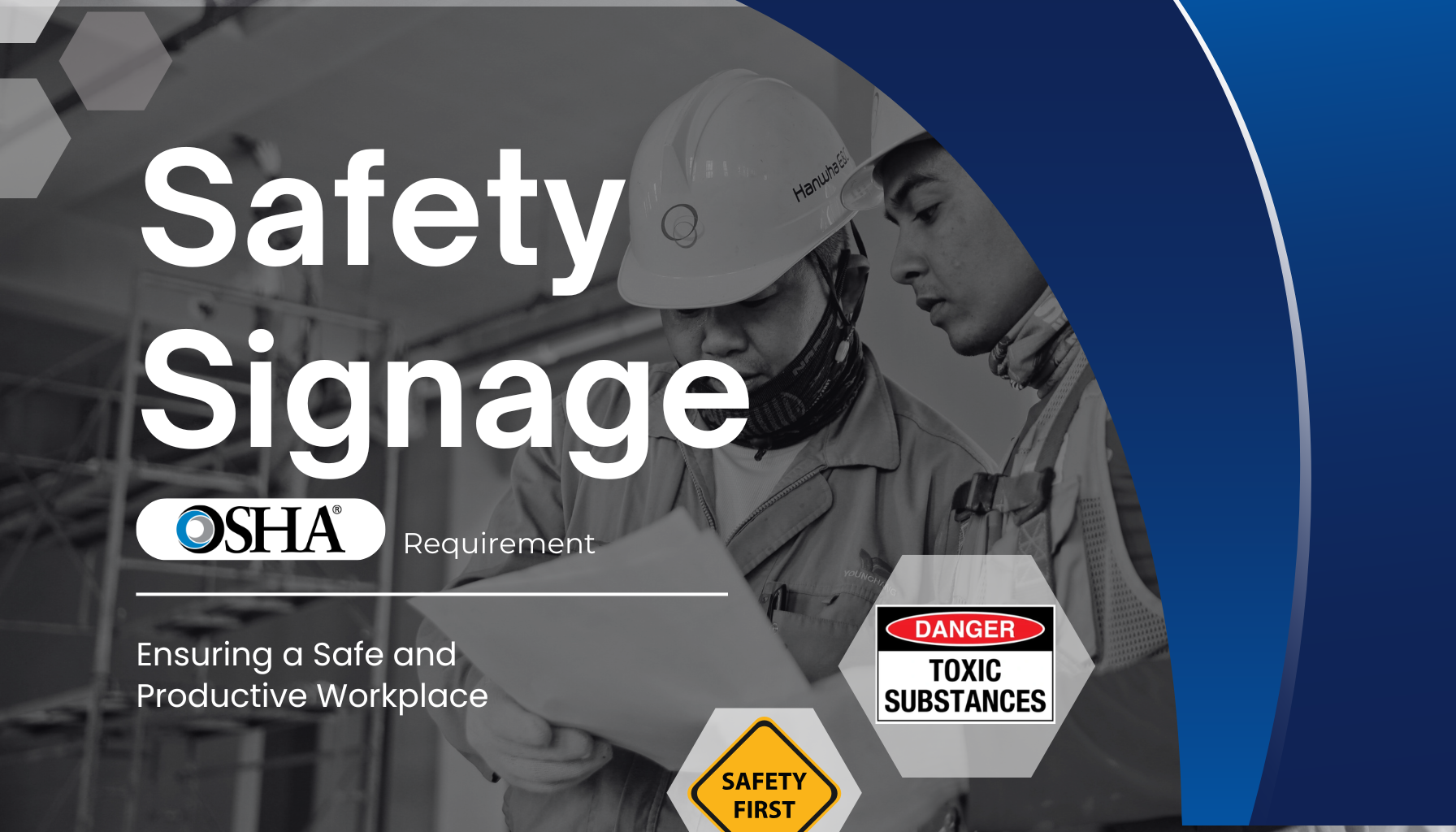Workplace safety starts with clear and effective communication, and OSHA-compliant safety signs and tags are an essential part of that strategy. These visual cues not only alert employees to potential hazards but also guide them in navigating the workplace safely.
Understanding OSHA's Safety Signage Requirements
OSHA's regulations, particularly 29 CFR 1910.145, outline the specifications for accident prevention signs and tags. These standards are designed to ensure that safety signs effectively communicate hazards and necessary precautions.
Key Elements of OSHA-Compliant Safety Signs:
-
Visibility and Legibility: Safety signs must be prominently displayed and easily readable. The signal word, such as "DANGER" or "CAUTION," should be legible from at least five feet away. In areas with low lighting, signs should be illuminated to maintain visibility.
-
Design and Construction: Signs should have rounded or blunt corners, free from sharp edges, burrs, or splinters, to prevent injuries. They must be constructed to withstand environmental factors, ensuring durability and longevity.
-
Color and Symbol Consistency: Adhering to standardized colors and symbols is crucial for immediate recognition. For instance, red typically signifies "DANGER," yellow indicates "CAUTION," and green denotes "SAFETY." Consistent use of these colors helps in quick hazard identification.
-
Clear Wording: The language on safety signs should be concise and easily understandable. It's essential that the wording provides clear instructions or information to effectively communicate the intended message.
Implementing Effective Safety Tags
Safety tags serve as temporary warnings about existing hazards, such as defective equipment. They should not replace permanent signs but act as interim alerts until the hazard is addressed. Employers must ensure that tags are placed in conspicuous locations and removed once the hazard no longer exists.
Best Practices for Employers
-
Regular Assessments: Conduct periodic evaluations of the workplace to identify areas where safety signs or tags are necessary.
-
Employee Training: Educate employees on the meaning of different signs and tags, ensuring they understand the associated hazards and required precautions.
-
Maintenance: Regularly inspect signs and tags for damage or wear and replace them as needed to maintain effectiveness.
By diligently implementing OSHA's guidelines on safety signs and tags, employers can create a safer work environment, reducing the risk of accidents and ensuring compliance with federal regulations.
For an update on how the increasing penalties from OSHA could affect your compliance efforts, check out this OSHA's 2025 Penalty Increase.















